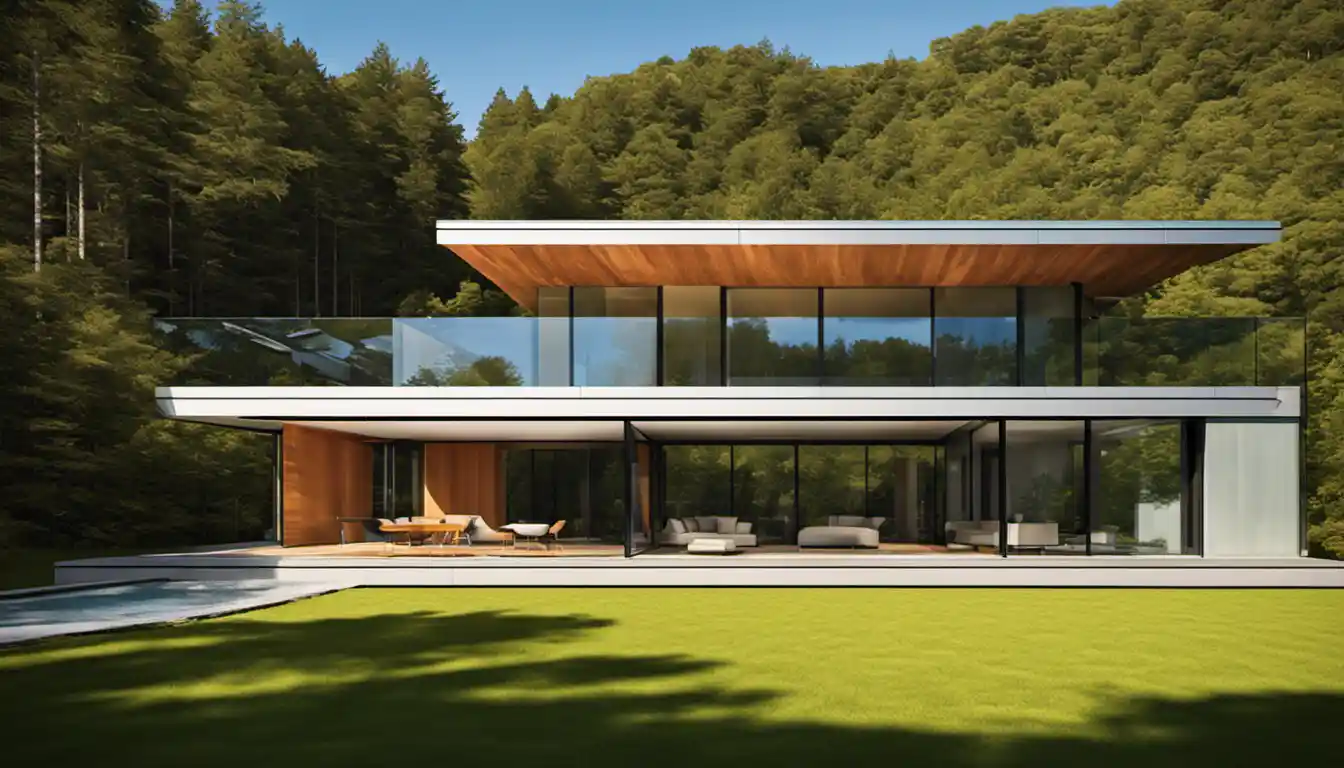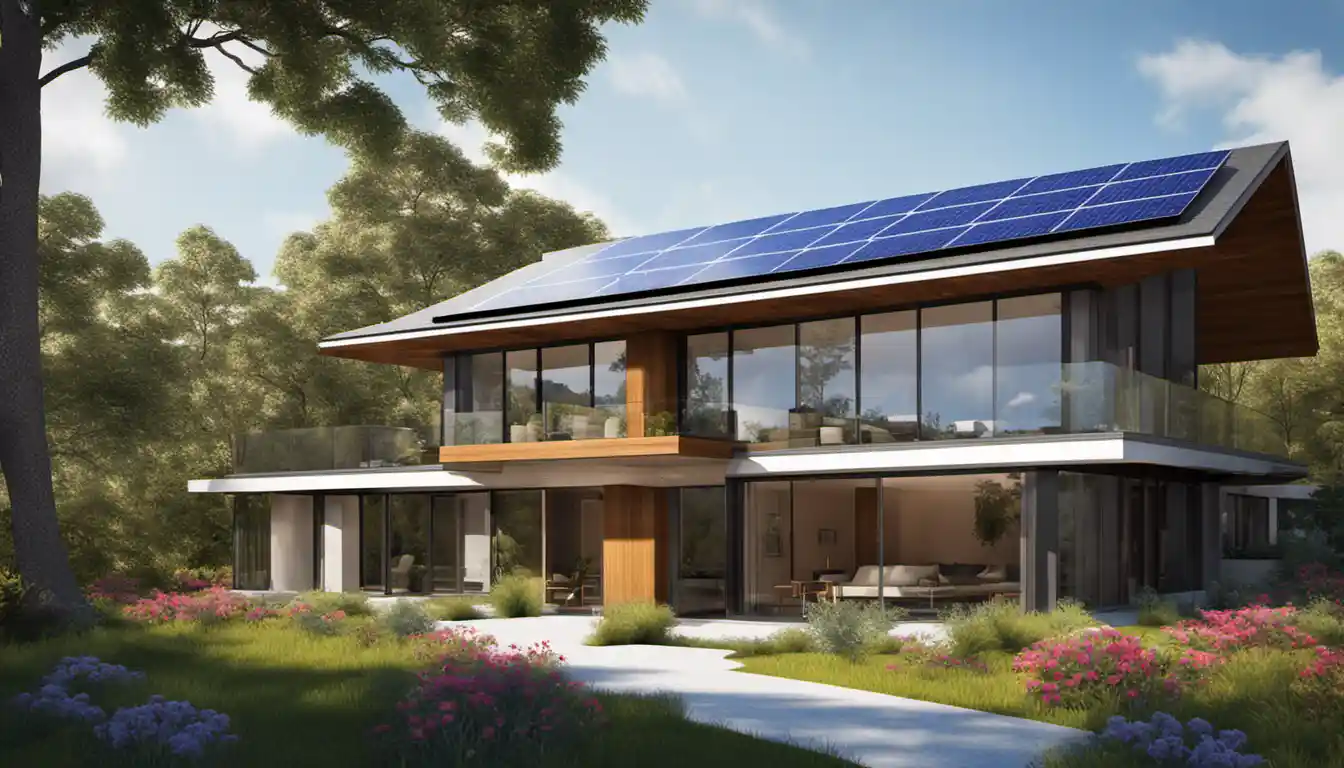Understanding Passive Solar Energy
Passive solar energy is a method of using the sun’s natural energy for heating and cooling purposes in a building, without needing mechanical systems or other external sources. This is often done through purposeful placement or design of windows, walls, and floors, which can absorb, store, and distribute solar energy in the form of heat in the winter and reject solar heat in the summer.
The Basics of Passive Solar Energy
The simplest way to understand what passive solar energy is, is to imagine feeling the warmth of the sun through a window on a frosty winter’s day. This heat transfer, which occurs without the aid of any machinery or foreign energy source, is an example of passive solar energy working its simple magic.
See also: What is Solar Energy? A Comprehensive Guide to Understanding & Harnessing the Sun’s Power
How Passive Solar Energy Works
“How does passive solar energy work, you may ask?” It involves capturing the sun’s energy within the “thermal mass” of a building. This refers to the walls, floors, and other substances which absorb and store heat during daytime, and when the temperature cools down at night, these heated substances release their stored heat. You can check other different sources of solar energy here, on our page about “what is solar energy”.
Different Types of Passive Solar Energy
Direct Gain
In this type of passive solar technology, sunlight is directly captured and used as heat energy. An ideal example would be the use of large sun-facing windows in buildings, which allow light (and therefore, heat) to penetrate and warm the interior directly.
Indirect Gain – Trombe Wall

A clever little invention known as a Trombe Wall is a perfect example of indirect passive solar gain. This is essentially a sun-facing wall made from a material that absorbs solar heat very efficiently, like stone, concrete, or metal, and placed behind a glass panel. The wall absorbs heat during the day, storing it, and then slowly releases the warmth during the night.
Isolated Gain – Sunspaces
In this method, a sunroom or a greenhouse is constructed on the sun-facing side of the building. This space catches and collects heat which can then be distributed to the rest of the building.
Implementing Passive Solar Energy at Home
Passive Solar Home Design
The design of a home can significantly influence its ability to utilize passive solar energy. For optimal heat gain, a house should be designed with more windows facing the winter sun (typically the south in the northern hemisphere) and fewer on the opposite side.
Passive Solar Home Design for Comfort
Your home’s comfort level can greatly be improved with passive solar energy. The key is to design the home in a way that maximizes heat gain during winter and minimizes it during summer. This could easily be achieved through a combination of right window placement, appropriate insulation, usage of thermal mass, and effective ventilation.
Site Selection for Passive Solar Homes
Another crucial factor to consider is the home’s site. Factors like the home’s orientation, the site’s climate, and the presence of natural shade- providers like trees can significantly impact the effectiveness of passive solar designs.
Practical Applications of Passive Solar Energy

Uses of Passive Solar Energy
The applications of passive solar energy are varied and plentiful. From simple tasks like heating a room or boiling a pot of water, all the way up to more complex applications like providing a building’s entire heating, cooling, and lighting needs.
Passive Solar Heating
A common use of passive solar energy is in heating. Whether it’s heating your home or your pool, passive solar energy provides a cost-effective and eco-friendly alternative.
Passive Solar Cooling
Contrary to popular belief, passive solar energy isn’t only for heating. It can also be utilized for cooling through natural ventilation, shading, and absorption refrigeration, making it an all-weather friend!
Pros and Cons of Passive Solar Energy
Benefits of Using Passive Solar Energy

The advantages of passive solar energy are plentiful. First and foremost, it’s free! The sun does not charge for its rays. It also reduces reliance on traditional (and often polluting) heating sources, and contributes to a more sustainable and resilient energy grid.
Potential Disadvantages of Passive Solar Energy
However, there are a few possible disadvantages. The effectiveness of passive solar energy designs can greatly depend on the ever-changing weather, and the upfront costs of making a home ‘passive solar ready’ can be steep.
Additional Resources to Explore Passive Solar Energy
Energy Saver Resources
The Energy Saver guide from the U.S. Department of Energy provides a wealth of information on energy efficiency, including how to implement passive solar designs.
Federal Government Resources
Websites like those from the National Renewable Energy Laboratory (NREL) provide a plethora of articles, resources, and tools to understand and use passive solar energy.
Energy.gov Resources
The Office of Energy Efficiency & Renewable Energy provides resources and practical tips on harnessing passive solar energy.
There we go, folks – a comprehensive understanding of what is passive solar energy. As a solar energy expert, I am excited about the ever-increasing potential we have to harness the power of the sun and create energy-efficient homes and buildings. Here’s to a more sustainable future, powered by the sun!



